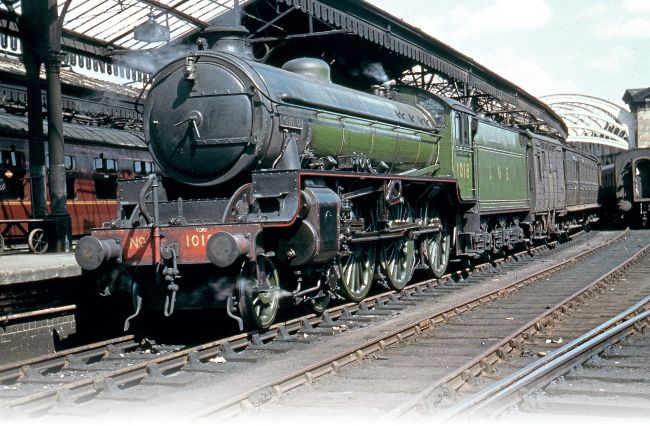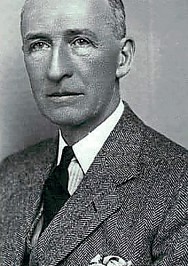LOCOMOTIVE ENGINEERS
Thompson Revisited
Former wartime CME of the LNER, Edward Thompson, was often viewed as intolerant and having a hatred of Gresley, yet others recalled his kindness and courteousness. What was the truth? Nicola Fox presents the evidence.

In his short tenure as CME of the LNER, Edward Thompson’s most numerous design was the mixed traffic ‘B1’ 4-6-0, of which 410 were built, including 136 after Nationalisation. As LNER No. 1018 Gnu, the loco sits at York in one of the south facing bay platforms.
C C B HERBERT/COLOUR-RAIL

LNER CME from 1941-1946, Edward Thompson
FOR fans of the LNER, the ultimate ‘poster boy’ must be Sir Nigel Gresley. Promoted to chief mechanical engineer (CME) of the Great Northern Railway in 1911 at the relatively young age of 35, he was then appointed as CME to the newly formed LNER in 1923, a position he held until his death in 1941.
During his tenure, the LNER outshopped many well-known locomotives, most notably No. 1472 (later 4472) – the world-famous Flying Scotsman – and, of course, the ‘A4s’. In the golden era of rail, these locomotives hauled named trains and set speed records.
Gresley’s crowning achievement was Mallard’s 126mph world speed record, which was never surpassed by any steam locomotive. He was even one of the few to be knighted by King Edward VIII during his short reign.
Taking all this at face value, it’s no surprise that his successor, Edward Thompson, wouldn’t be as popular; those were big boots to fill and huge achievements to live up to. However, to say that Thompson was less popular than Gresley is putting it mildly.
Historians and enthusiasts alike decry his decisions, designs and demeanour. The belief persists that Thompson was an ill-tempered man who disliked Gresley and his designs – which he sought to erase and replace with his own. In short, Thompson is perceived as an unpleasant, Gresley-hating, incompetent CME worthy of the denigration heaped upon him.
But is there another side to the story? Network Rail signalling design engineer Simon Martin has dedicated more than 20 years examining the evidence in an effort to ‘set the record straight’. The information he has unearthed makes for compelling reading, and is currently being turned into a book offering a counter-argument to those already available.
According to Simon: “People perceive Thompson to be a controversial figure, in my opinion, based on a very select few people who have written about him after the event and have perhaps been unfair in their portrayal.”
Simon has kindly made his research available to The Railway Magazine and it paints an interesting picture. To look at Edward Thompson from a new perspective requires examination of the charges laid at his door.
First, simply that he was an unpopular, unpleasant and difficult person; second, that he hated Sir Nigel Gresley; third, that he sought to rid the LNER of Gresley; fourth, and finally, that he chose to rebuild the GNR’s historically significant pioneer Pacific locomotive, Great Northern, purely out of spite.
“Thompson’s personal life was not a happy one. His wife had passed away in 1938 and his own house was bombed in 1942, leaving him homeless.”
Thompson, the man
The portraits of Thompson are not flattering. He was described by railway writer H C B Rogers as possessing an ill temper and being “notoriously difficult to deal with”. The Stephenson Locomotive Journal declared: “A measure of his unpopularity was the fact that nobody attended his funeral” – which, on face value, is a damning indictment.
However, the SLS failed to take into account one very important point. Nobody attended Thompson’s funeral at his express stipulation. What else may have been erroneously reported?
Regarding his temperament at work, that he was a hard taskmaster is undebatable. Thompson was in complete control and liked to oversee everything, and has been described by many as autocratic, which evidence from the time seems to support. He does not sound like a delight to work with. Before judging him too harshly, there are mitigating circumstances that might make allowance for this behaviour.